Annexin II regulates multivesicular endosome biogenesis in the degradation pathway of animal cells
- PMID: 12839987
- PMCID: PMC165635
- DOI: 10.1093/emboj/cdg321
Annexin II regulates multivesicular endosome biogenesis in the degradation pathway of animal cells
Abstract
Proteins of the annexin family are believed to be involved in membrane-related processes, but their precise functions remain unclear. Here, we have made use of several experimental approaches, including pathological conditions, RNA interference and in vitro transport assays, to study the function of annexin II in the endocytic pathway. We find that annexin II is required for the biogenesis of multivesicular transport intermediates destined for late endosomes, by regulating budding from early endosomes-but not the membrane invagination process. Hence, the protein appears to be a necessary component of the machinery controlling endosomal membrane dynamics and multivesicular endosome biogenesis. We also find that annexin II interacts with cholesterol and that its subcellular distribution is modulated by the subcellular distribution of cholesterol, including in cells from patients with the cholesterol-storage disorder Niemann-Pick C. We conclude that annexin II forms cholesterol-containing platforms on early endosomal membranes, and that these platforms regulate the onset of the degradation pathway in animal cells.
Figures
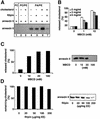



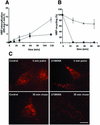
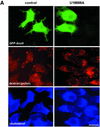

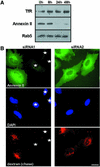

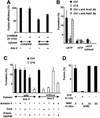
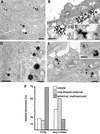
Similar articles
-
Annexin A2-dependent polymerization of actin mediates endosome biogenesis.Dev Cell. 2009 Mar;16(3):445-57. doi: 10.1016/j.devcel.2009.01.007. Dev Cell. 2009. PMID: 19289089
-
Association of annexin 2 with recycling endosomes requires either calcium- or cholesterol-stabilized membrane domains.Eur J Cell Biol. 2001 Aug;80(8):499-507. doi: 10.1078/0171-9335-00184. Eur J Cell Biol. 2001. PMID: 11561901
-
Annexin A2 binding to endosomes and functions in endosomal transport are regulated by tyrosine 23 phosphorylation.J Biol Chem. 2009 Jan 16;284(3):1604-11. doi: 10.1074/jbc.M806499200. Epub 2008 Nov 5. J Biol Chem. 2009. PMID: 18990701
-
Molecular assemblies and membrane domains in multivesicular endosome dynamics.Exp Cell Res. 2009 May 15;315(9):1567-73. doi: 10.1016/j.yexcr.2008.12.006. Epub 2008 Dec 24. Exp Cell Res. 2009. PMID: 19133258 Review.
-
Annexin A6-regulator of the EGFR/Ras signalling pathway and cholesterol homeostasis.Int J Biochem Cell Biol. 2010 May;42(5):580-4. doi: 10.1016/j.biocel.2009.12.020. Epub 2010 Jan 4. Int J Biochem Cell Biol. 2010. PMID: 20044025 Review.
Cited by
-
Short-range exosomal transfer of viral RNA from infected cells to plasmacytoid dendritic cells triggers innate immunity.Cell Host Microbe. 2012 Oct 18;12(4):558-70. doi: 10.1016/j.chom.2012.08.010. Cell Host Microbe. 2012. PMID: 23084922 Free PMC article.
-
Clathrin mediates endocytosis of progastrin and activates MAPKs: role of cell surface annexin A2.Am J Physiol Gastrointest Liver Physiol. 2012 Apr;302(7):G712-22. doi: 10.1152/ajpgi.00406.2011. Epub 2012 Jan 12. Am J Physiol Gastrointest Liver Physiol. 2012. PMID: 22241862 Free PMC article.
-
S100A10/p11: family, friends and functions.Pflugers Arch. 2008 Jan;455(4):575-82. doi: 10.1007/s00424-007-0313-4. Epub 2007 Jul 19. Pflugers Arch. 2008. PMID: 17638009 Review.
-
Heterotetrameric annexin A2/S100A10 (A2t) is essential for oncogenic human papillomavirus trafficking and capsid disassembly, and protects virions from lysosomal degradation.Sci Rep. 2018 Aug 3;8(1):11642. doi: 10.1038/s41598-018-30051-2. Sci Rep. 2018. PMID: 30076379 Free PMC article.
-
Annexin A2 regulates TRPA1-dependent nociception.J Neurosci. 2014 Oct 29;34(44):14506-16. doi: 10.1523/JNEUROSCI.1801-14.2014. J Neurosci. 2014. PMID: 25355205 Free PMC article.
References
Publication types
MeSH terms
Substances
LinkOut - more resources
Full Text Sources

